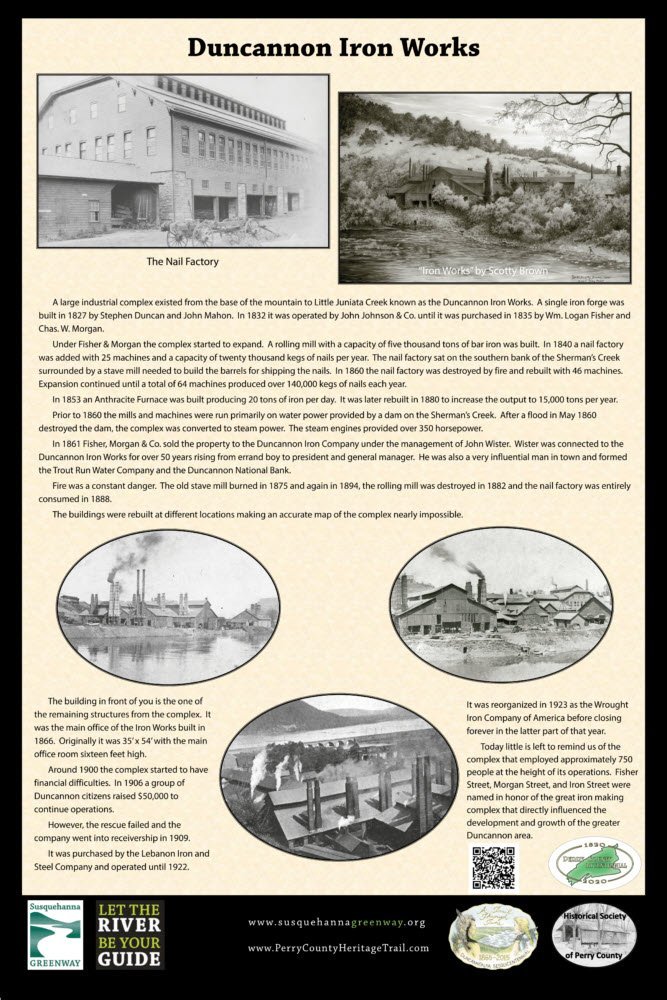A large industrial complex existed from the base of the mountain to Little Juniata Creek known as the Duncannon Iron Works. A single iron forge was built in 1827 by Stephen Duncan and John Mahon. In 1832 it was operated by John Johnson & Co. until it was purchased in 1835 by Wm. Logan Fisher and Chas. W. Morgan.
Under Fisher & Morgan the complex started to expand. A rolling mill with a capacity of five thousand tons of bar iron was built. In 1840 a nail factory was added with 25 machines and a capacity of twenty thousand kegs of nails per year. The nail factory sat on the southern bank of the Sherman’s Creek surrounded by a stave mill needed to build the barrels for shipping the nails. In 1860 the nail factory was destroyed by fire and rebuilt with 46 machines. Expansion continued until a total of 64 machines produced over 140,000 kegs of nails each year.
In 1853 an Anthracite Furnace was built producing 20 tons of iron per day. It was later rebuilt in 1880 to increase the output to 15,000 tons per year. Prior to 1860 the mills and machines were run primarily on water power provided by a dam on the Sherman’s Creek. After a flood in May 1860 destroyed the dam, the complex was converted to steam power. The steam engines provided over 350 horsepower.
In 1861 Fisher, Morgan & Co. sold the property to the Duncannon Iron Company under the management of John Wister. Wister was connected to the Duncannon Iron Works for over 50 years rising from errand boy to president and general manager. He was also a very influential man in town and formed the Trout Run Water Company and the Duncannon National Bank.
Fire was a constant danger. The old stave mill burned in 1875 and again in 1894, the rolling mill was destroyed in 1882 and the nail factory was entirely consumed in 1888.
The buildings were rebuilt at different locations making an accurate map of the complex nearly impossible.
office room sixteen feet high.Around 1900 the complex started to have financial difficulties. In 1906 a group of Duncannon citizens raised $50,000 to continue operations.
However, the rescue failed and the company went into receivership in 1909.
It was purchased by the Lebanon Iron and Steel Company and operated until 1922.
It was reorganized in 1923 as the Wrought Iron Company of America before closing forever in the latter part of that year.
Today little is left to remind us of the complex that employed approximately 750 people at the height of its operations. Fisher Street, Morgan Street, and Iron Street were named in honor of the great iron making complex that directly influenced the development and growth of the greater Duncannon area.






